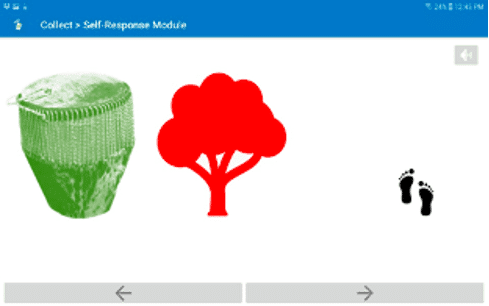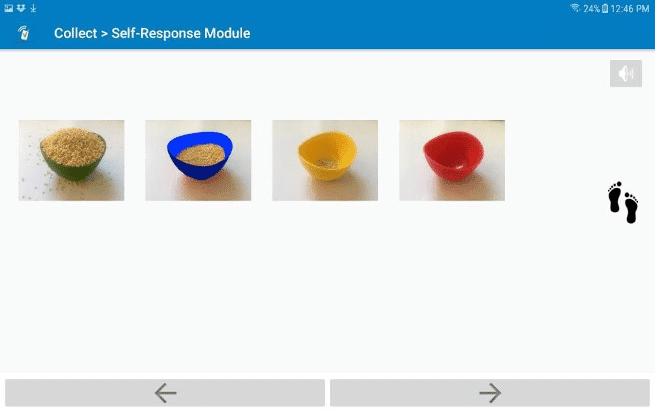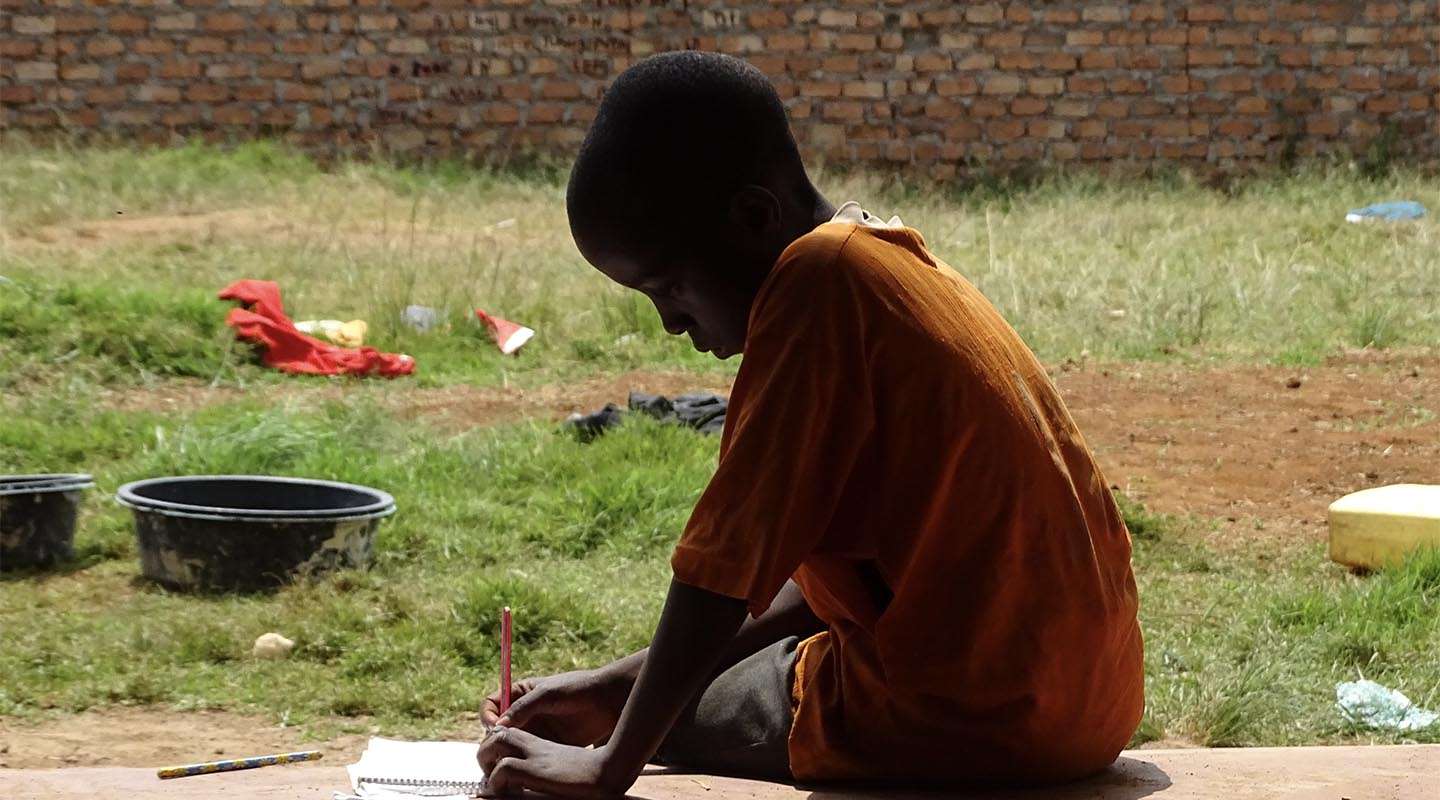This post was authored by Bart Robertson, Manager of Monitoring, Evaluation, and Learning at the Global Fund to End Modern Slavery (GFEMS) and was originally published on the GFEMS website. Additional information about how SurveyCTO was used for this survey was provided in collaboration with users at ICF.
GFEMS recently funded a prevalence study in Karamoja, Uganda to determine the proportion of children in households (age 12-17) who have been sexually exploited for commercial gain1. Although analysis is on-going, the data indicate that the prevalence of commercial sexual exploitation of children (CSEC) in Karamoja is gender agnostic. In other words, there is no statistically significant difference between the proportion of boys and girls that have experienced sexual exploitation. This runs counter to conventional thinking in the field of modern slavery (as well as a large body of evidence) that girls are more often victims of CSEC than boys (though researchers acknowledge that less is known about the scope and nature of CSEC among boys).
So why are boys in Karamoja more vulnerable to CSEC? Why do findings in Karamoja seem to contradict those of other studies?
The scope and nature of modern slavery varies greatly by geography and socio-economic context, so one simple answer could be that the region is an outlier. Another consideration is that this is the first study of CSEC in Uganda to use probabilistic sampling. Previous studies have used convenience sampling, meaning that results are not representative of the population. Another possible cause (and the focus of this blog) could be the study’s use of Audio Computer-Assisted Self-Interviewing (ACASI). This interviewing tool is new to the field of modern slavery prevalence estimation and may address some long-standing challenges related to response accuracy.
While prevalence estimations are critical to understanding the scale and scope of modern slavery, ensuring their accuracy is inherently difficult. Prevalence estimates are derived from large-scale surveys in which social desirability bias (respondents’ conscious and unconscious desire to answer in a socially desirable way) presents a significant challenge. Respondents are asked about their involvement in what are considered culturally taboo and often illegal activities. In the case of this study, we are asking children from conservative, rural communities about sexual acts. The survey inquires on the exchange of sex for money, third party facilitation of sex acts, and sexual violence; concepts which are generally considered inappropriate to discuss with adults, even more so unknown survey enumerators.
While there are no perfect solutions that ensure response accuracy to sensitive questions, ACASI offers an alternative approach to traditional face-to-face interviews (FFI), enabling respondents to share information independently and without having to directly engage with an interviewer. This additional degree of response confidentiality helps to reduce social desirability bias and can ultimately produce better estimates.

Audio Computer-Assisted Self-Interviewing (ACASI): How It Works
The most sensitive questions of the prevalence survey were grouped into a tablet-based, self-administered ACASI module. When the interviewer reaches this module, a tablet and a pair of headphones are given to the child respondent. The interviewer explains how the module will work and that the answers are completely confidential. Following this explanation, the tablet-based software guides the child through an interactive training. The training shows the prompts and images that will be used and explains how to proceed through the module2. The child must provide responses that show comprehension before proceeding to the module.
Once the module begins, the child hears an audio recording of each question. Potential answers are associated with neutral images on the screen and the child is instructed to select the image that corresponds with his or her answer. The child then clicks on an icon to proceed to the next question3.

Audio:
Have you done sexual things in exchange for you or someone else receiving anything like money, a place to stay, food, gifts or favors?
Touch the green drum if your answer is “yes.”
Touch the red tree if your answer is “no.”

Audio:
How well do your caregivers know your friends?
Touch the GREEN bowl if they know them “very well.”
Touch the BLUE bowl if they know them “somewhat well.”
Touch the YELLOW bowl if they know them “not very well.”
Touch the RED bowl if they don’t know them at all.
Once the child is finished with the module, he or she hands the headphones and the tablet back to the interviewer, and they continue with the rest of the questionnaire. The interviewer will not be able to access a child’s answers after they are recorded.
ACASI is adapted from the public health field where it’s widely used to gather data on sensitive topics like drug use and sexual risk behavior4. Several studies indicate that ACASI can serve to reduce social desirability bias in survey responses. For example, a study of injecting drug users (IDU) in Sydney, Australia asked respondents a series of 5 questions relating to injecting and sexual behavior that could induce social desirability bias. These questions were first administered via FFI, then readministered to the same respondents within a week using ACASI. Researchers then measured the extent of discordance (i.e. difference) between the two response sets. The study found that FFI yielded what could be considered more socially desirable responses than ACASI. This includes a statistically significant higher mean age of first injection, a lower prevalence of recent syringe sharing, and a longer duration since the last occurrence of unprotected sex5. Even more telling is that respondents who reported a history of sex work were more likely than other respondents to provide discordant responses on the duration since last occurrence of unprotected sex (42% vs 25% x2= 4.56, p<0.05).
To our knowledge, this prevalence study is the first time ACASI has been applied to the field of modern slavery, and more research is required to determine if it’s effect on social desireability bias will transfer across fields. However, we suspect that the use of ACASI is a contributing factor to our unique findings. CSEC buyers tend to be male, so in a conservative culture (like Karamojong) where homosexuality is not commonly accepted, there is likely a greater reluctance for boys to admit to sexual exploitation than girls. We believe the use of ACASI helped to mitigate this reluctance, leading to more accurate responses. This, in turn, revealed that CSEC in the region is as commonplace for boys as it is for girls.
Although many challenges remain to ensuring the response accuracy of prevalence studies, ACASI represents a new and promising tool as GFEMS, its research partners, and like-minded organizations continue to expand the boundaries of modern slavery prevalence estimation. We encourage other CSEC and modern slavery researchers to employ ACASI, and if possible, test it experimentally. Doing so can provide us with greater insights into the efficacy of this tool and how to apply it optimally. This, in turn, can ultimately provide us with a more accurate and nuanced understanding of modern slavery and the socio-economic drivers that underpin it.
- This study was conducted by ICF and Makerere University and made possible with funding from the Department of State Office to Monitor and Combat Trafficking in Persons (J/TIP) under the Program to End Modern Slavery 2 (PEMS 2).
- These images and prompts are also presented and explained to the child during the interviewer-administered portion of the survey using showcards to ensure that he or she understands how to proceed through the module.
- A small-scale pilot test of children aged 12-17 was conducted to assess developmental appropriateness and the ability to train children to use the instrument, and the social workers from Karamoja provided input into the cultural relevance of the shapes and colors.
- Willis, Gordon B, Alia Al-Tayyib, and Susan Rogers. 2001. “The Use of Touch-Screen ACASI in a High-Risk Population: Implications for Surveys Involving Sensitive Questions.” In Proceedings of the Annual Meeting of the American Statistical Association, 6; Falb, K., Tanner, S., Asghar, K. et al. Implementation of Audio-Computer Assisted Self-Interview (ACASI) among adolescent girls in humanitarian settings: feasibility, acceptability, and lessons learned. Confl Health 10, 32 (2016). https://doi.org/10.1186/s13031-016-0098-1; Villarroel, Maria A., Charles F. Turner, Elizabeth Eggleston, Alia Al-Tayyib, Susan M. Rogers, Anthony M. Roman, Philip C. Cooley, and Harper Gordek. 2006. “Same-Gender Sex in the United States Impact of T-Acasi on Prevalence Estimates.” Public Opinion Quarterly 70 (2): 166–96.
- M. Mofizul Islam , Libby Topp , Katherine M. Conigrave , Ingrid van Beek , Lisa Maher , Ann White, Craig Rodgers & Carolyn A. Day (2012): The reliability of sensitive information provided by injecting drug users in a clinical setting: Clinician-administered versus audio computer-assisted self-interviewing (ACASI), AIDS Care: Psychological and Socio-medical Aspects of AIDS/HIV, 24:12, 1496-1503.
More on how SurveyCTO was used to conduct the GFEMS ACASI survey
Initially, a more familiar software was slated to set up the self-administered module, but unfortunately, it didn’t have the capabilities needed for this research. For the ACASI workflow, the ICF team needed a platform that supports media-rich surveys with images and audio for the type of questions that were being asked to child respondents. SurveyCTO provided the exact functionality they needed, and much more!
As ICF noted, technological literacy among the population in Karamoja, Uganda is low, so a user-friendly experience was needed to ensure children who were not familiar with technology such as tablets had an easier time answering the questions for this survey. Oftentimes, in these remote villages, only a few people like community leaders have access to a cell phone and at times it might be shared in the community.
After ICF staff consulted some colleagues in Bangladesh, SurveyCTO was recommended as a possible product that could handle the type of data collection that was needed. SurveyCTO’s unique plug-in functionality, with easy-to-use plug-ins such as the timed-choice plug-in, as well as the ability to customize select-one questions using different appearance options allowed the team to set up the survey just as they had planned. Once ICF decided to use SurveyCTO for one of the modules, they began to design the survey in December of 2020 and conducted enumerator training and data collection interviews in February and March of 2021.
Being a new user of a product always presents challenges, but with the wide breadth of resources available to SurveyCTO users, as well as the 24×7 assistance from SurveyCTO’s professional support team, designing and implementing the survey was easy and successful. When any problems did arise, SurveyCTO’s support team was always ready to assist.
Considerations about the respondent population and how that influenced design
The households for the broader survey were identified using multi-stage stratified sampling design with probability proportional to size (PPS) sampling. Within a household, child respondents were randomly selected if there were more than 2 children in the 12 and 17 age range. In total, 830 children were surveyed, and of that number, about 20 did not want to take the self-administered module.
The ICF team went into the survey knowing the selected children may have low levels of literacy. This required that there be as little text as possible on the screen of the device used for the survey. This is why the form was designed with colorful, familiar images and no text. As it turns out, one-third of the children interviewed had never attended school. The timed-choice plug-in allowed the team to design the survey to auto-progress from one question to the next after a response is provided to eliminate the need for respondents to click buttons. You can find the SurveyCTO form definition of the survey used for this project here.
Keeping literacy rates and familiarity with technology in mind, during the interviewer-administered part of the survey, interviewers used showcards to prepare the respondents on how to select their answers to the questions on the screen once the self-administered module began. These showcards were made with screenshots of the surveys on tablets and interviewers used them to explain how to replay the audio or how to skip the questions if they didn’t want to answer them.
Training the enumerators
For this survey, 30 interviewers were selected and trained by ICF’s local partner, Makerere University in Uganda. Due to COVID-19, travel restrictions did not allow for the researchers from the US to be on the ground for training, so some of the training was observed and conducted remotely over Zoom. This weeklong training took place from February 19-23, 2021 and the fieldwork took place from March 1-13, 2021. The speed and efficiency with which the team was able to complete the interviews was a result of a large, well-trained group of enumerators. This was even more impressive considering a number of dynamic factors that affected the area they were in, such as inter-clan conflict and cattle rustling, which required consultation with local community authorities and vigilant navigation.
Additional challenges
The COVID-19 pandemic caused some challenges in conducting the survey. Typically, interviewers would sit next to the child and ask them questions and then record their responses on the tablet, but because of social distancing, the interviewers needed to sit 2 meters away from them while also speaking through a mask.
They also encountered problems keeping the tablets charged because of the remote location and lack of electricity. This in turn made it difficult to upload submissions from mobile devices to the SurveyCTO server daily.
When data was uploaded, the ICF team monitored it from the SurveyCTO console. As the data showed that some respondents indicated they had experienced sexual exploitation or violence, this prompted the team to offer referrals to those who needed them in order to connect them with available resources. This also highlighted how prevalent the problem was in the area, as noted in the GFEMS post.
Future research
The ability provided by SurveyCTO to conduct this type of survey workflow using robust form design tools and plug-ins allowed the researchers to innovatively and successfully conduct interviews on a sensitive topic. This survey showed promise for future research on commercial sexual exploitation of children (CSEC) and forced labor of adults. The team is planning to conduct the exact same research as part of an endline study in Karamoja in 2022.
If you are interested in learning more about this research, please contact Bart Robertson, Monitoring, Evaluation, and Learning Manager at the Global Fund to End Modern Slavery at bart.robertson@gfems.org. For a full report of the findings, please visit www.gfems.org.
Streamline your next ACASI survey with SurveyCTO
Explore how SurveyCTO can help you collect cleaner, more secure data.




